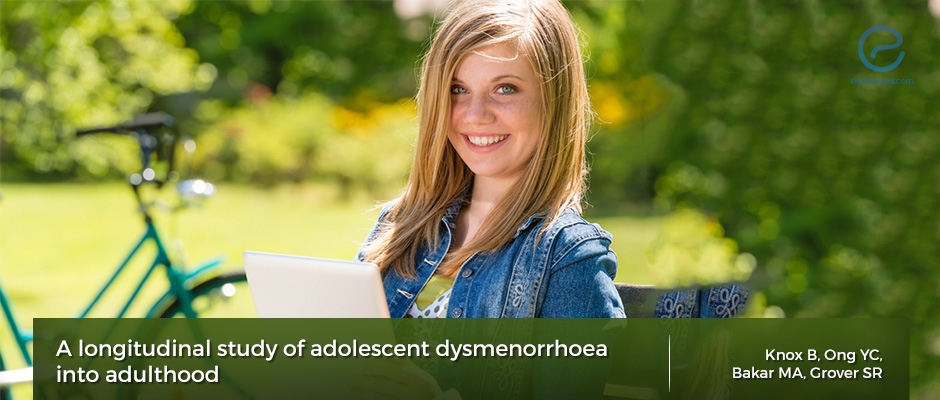Adolescent dysmenorrhea and future endometriosis
Sep 3, 2019
Secondary dysmenorrhea in adolescent period is mainly due to endometriosis.
Key Points
Highlights:
- If pelvic pain symptoms improve for a while after the use of oral contraceptive pills in the adolescent period, the patient may have endometriosis.
Importance:
- Understanding the nature of dysmenorrhea and its impact on women health is important while counseling and managing adolescent and young women.
What's done here:
- A longitudinal cohort study to examine the long-term outcomes of dysmenorrhea and associated rate of endometriosis in the adolescent period.
Key results:
- The results proved that dysmenorrhea resolves only 1 in 4 young women after their adolescent period.
- In the group of young women with persisting dysmenorrhea in a mean of 10 years, only 1 of 5 diagnosed as mild endometriosis.
Limitations
- Relatively small sample size, data from a single institution and use of a non-validated questionnaire.
Lay Summary
Dysmenorrhoea is typically classified as primary, or secondary due to underlying pathologies like fibroids, endometriosis, adenomyosis or uterine anomalies. Generally, long-term dysmenorrhea is present in endometriotic patient's anamnesis, but until recently, the research to clarify this connection remained retrospective.
Knox et al. from the Department of Paediatric and Adolescent Gynecology, The Royal Children's Hospital, Melbourne, Australia, conducted a longitudinal cohort study on adolescents who need multiple treatments in tertiary centers due to their severe dysmenorrhea, aiming to find the relation between chronic pain and endometriosis diagnosed in their adulthood. Results were recently published in the European Journal of Pediatrics.
Of the initial 148 subjects, 77 adolescents have stayed in contact during 4-14 years of follow-up (mean 10.24 years). Subjects provided information about the length of menstruations, presence, and severity of pain during menses, the heaviness of their menstrual flow, associated symptoms like nausea and headache and finally pain during intercourse, if it exists.
During the follow-up, 24 young women who have severe dysmenorrhea underwent diagnostic laparoscopy and 18.6% of overall cohort diagnosed as mild endometriosis. Those who have endometriosis reported improvement of menstrual pain with the treatment they took in their adolescent period. No other statistical correlation with the menstruation characteristics was found.
This longitudinal study pointed out the importance of adolescent dysmenorrhea. "More research into the role of invasive investigation and management of this young population is needed", added the authors.
Research Source: https://www.ncbi.nlm.nih.gov/pubmed/31292729
adolescent dysmenorrhea adult dysmenorrhea combined oral contraceptives (OCP) heavy menstrual bleeding (HMB) laparoscopic diagnosis endometriosis.

